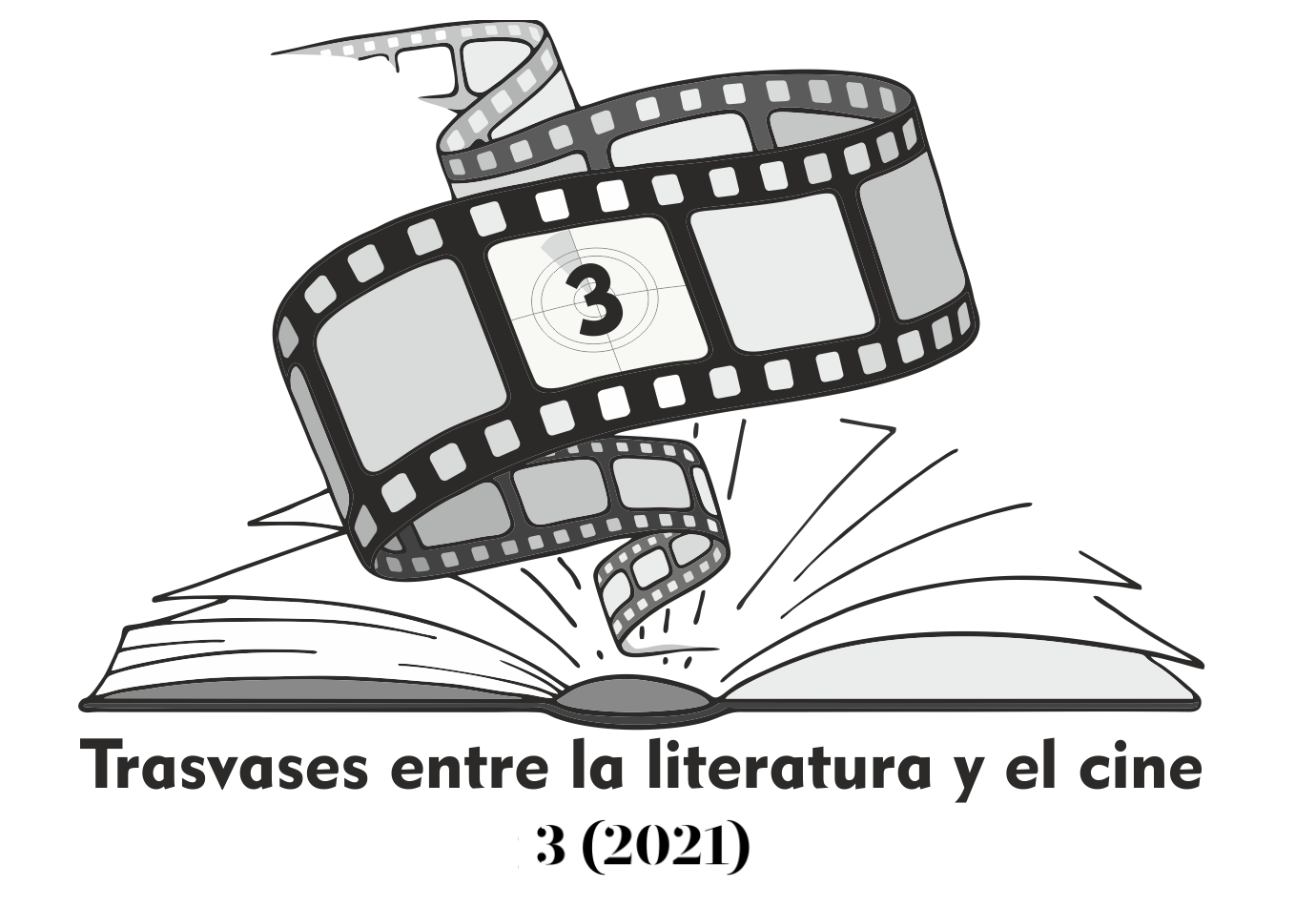From a Clear Line to a Perpetual Motion: Realism and Dynamism in the Film Adaptation of The Adventures of Tintin by Steven Spielberg
DOI:
https://doi.org/10.24310/Trasvasestlc.vi3.12153Keywords:
Film adaptation, comic, realism, dinamysm, camera movement, motion capture, expressivenessAbstract
The Adventures of Tintin is one of the most famous series in comic history. Among the various audiovisual adaptations of Hergé's work, the film The Adventures of Tintin: The Secret of the Unicorn (2011), directed by Steven Spielberg using motion capture technology, stands out. This article reflects on some of the challenges and cinematographic solutions used by the director to adapt Hergé's characteristic visual and narrative style to the big screen. Based on statements of the creators and theorists of both media, the research analyzes the process of stylistic negotiation undertaken by Spielberg in relation to two key aesthetic concepts: realism and dynamism.
Downloads
Metrics
Publication Facts
Reviewer profiles N/A
Author statements
Indexed in
-
—
- Academic society
- N/A
- Publisher
- Universidad de Málaga
References
BAUDSON, Michel (1991), «El mundo imaginario de Tintín», en VV.AA., El mundo imaginario de Tintín, Barcelona, Editorial Juventud, págs. 8-9.
BETTINGER, Brendan (2011), «Steven Spielberg Talks About the Motion Capture of THE ADVENTURES OF TINTIN», Collider. [En línea: https://collider.com/steven-spielberg-talks-about-the-motion-capture-of-the-adventures-of-tintin. Fecha de consulta: 20/02/2021].
BROWN, Marc (2008), «Blistering barnacles! It's Spielberg's new Tintin», The Guardian. [En línea: https://www.theguardian.com/film/2008/mar/28/books.news. Fecha de consulta: 18/02/2021].
BULLOCK, Paul (2017), «Painting with Pixels: Spielberg’s Tintin», Medium. [En línea: https://medium.com/from-director-steven-spielberg/painting-with-pixels-spielbergs-tintin-dfbb57341f69. Fecha de consulta: 18/02/2021].
CABIN, Chris (2012), «Steven Spielberg’s The Adventures of Tintin on Paramount Blu-ray», Slant. [En línea: https://www.slantmagazine.com/dvd/the-adventures-of-tintin-bd/. Fecha de consulta: 01/03/2021].
CARTER, Chris (2019), «Hyper-Realism in The Adventures of Tintin», International Journal of Computer Graphics & Animation, 9(4).
CORLISS, Richard (2011), «Spielberg’s 3-D Cartoon Adventure: It’s Tintinastic!», Time. [En línea: https://entertainment.time.com/2011/12/21/spielbergs-3-d-cartoon-adventure-its-tintinastic/. Fecha de consulta: 18/02/2021].
EBERT, Roger (2011), «Tintin! Tonnerre de Brest! Mille sabords!», RogerEbert.com. [En línea: https://www.rogerebert.com/reviews/the-adventures-of-tintin-2011. Fecha de consulta: 18/02/2021].
EDELSTEIN, David (2011), «The Adventures of Tintin», New York Magazine. [En línea: https://nymag.com/listings/movie/adventures-of-tintin-the/. Fecha de consulta: 18/02/2021].
FARR, Michael (2001), Tintin. The Complete Companion, London, Jon Murray.
FREI, Vincent (2011), «THE ADVENTURES OF TINTIN: Matt Aitken – VFX Supervisor – Weta Digital», ART of VFX. [En línea: https://www.artofvfx.com/the-adventures-of-tintin-matt-aitken-superviseur-vfx-weta-digital/. Fecha de consulta: 20/02/2021].
GALLOWAY, Stephen (2011), «The Titans Behind 'The Adventures of Tintin'», The Hollywood Reporter. [En línea: https://www.hollywoodreporter.com/news/adventures-tintin-steven-spielberg-peter-jackson-250102. Fecha de consulta: 19/02/2021].
GASCA, Luis y GUBERN, Roman (2001), El discurso del cómic, Madrid, Cátedra.
GIARDINA, Carolyn (2011), «'The Adventures of Tintin': What James Cameron Showed Spielberg and Jackson», The Hollywood Reporter. [En línea: https://www.hollywoodreporter.com/news/adventures-tintin-james-cameron-spielberg-jackson-250106. Fecha de consulta: 19/02/2021].
GROENSTEEN, Thierry (2007), The System of Comics, Jackson, University Press of Mississippi.
GROENSTEEN, Thierry (2013), Comics and Narration, Jackson, University Press of Mississippi.
GUISE, Chris (2011), Artbook. Las aventuras de Tintin, Barcelona, Zephyrum Ediciones.
HERGÉ (1990a), El cangrejo de las pinzas de oro, Barcelona, Editorial Juventud.
HERGÉ (1990b), El secreto del Unicornio, Barcelona, Editorial Juventud.
HERGÉ (1990c), El tesoro de Rackham el Rojo, Barcelona, Editorial Juventud.
HERGÉ (1991), «Cómo nace una aventura de Tintín», en VV.AA., El mundo imaginario de Tintín, Barcelona, Editorial Juventud, págs. 10-19.
LEZARD, Nicholas (2011), «How could they do this to Tintin?», The Guardian. [En línea: https://www.theguardian.com/culture/2011/oct/18/how-could-do-this-tintin. Fecha de consulta: 04/03/2021].
LOFFICIER, Jean-Marc y LOFFICIER, Randy (2002), The Pocket Essential Tintin, Harpenden, Pocket Essentials.
MCCLOUD, Scott (1993), Understanding Comics. The Invisible Art, New York, HarperCollins.
NGUYEN, Nick (2012), «The Adventures of Tintin: The Secret of the Unicorn (Steven Spielberg, 2011)», European Comic Art Vol, 5(2), pág 109. [En línea: https://www.academia.edu/2910589/The_Adventures_of_Tintin_The_Secret_of_the_Unicorn_Steven_Spielberg_2011_. Fecha de consulta: 19/02/2021].
RAINER, Peter (2011), «The Adventures of Tintin: movie review», The Christian Science Monitor. [En línea: https://www.csmonitor.com/The-Culture/Movies/2011/1221/The-Adventures-of-Tintin-movie-review-VIDEO. Fecha de consulta: 19/02/2021].
REVERT, Jordi (2013), «Tintín o el trazo difícil: un viaje accidentado al "mainstream" del cine», L'Atalante: revista de estudios cinematográficos, 16, págs. 20-26.
SCREECH, Matthew (2005), Masters of the Ninth Art: Bandes Dessinées and Franco-Belgian Identity, Liverpool, Liverpool University Press.
STERCKX, Pierre (1991), «Tintín, trazo a trazo », en VV.AA., El mundo imaginario de Tintín, Barcelona, Editorial Juventud, págs. 20-25.
STEVENS, Dana (2011), «Tintin, So So», Slate. [En línea: https://slate.com/culture/2011/12/adventures-of-tintin-review-spielbergs-motion-capture-adventure-has-its-charms-but-its-no-raiders.html. Fecha de consulta: 17/02/2021].
WEBER, Bill (2011), «Review: The Adventures of Tintin», Slant. [En línea: https://www.slantmagazine.com/film/the-adventures-of-tintin/. Fecha de consulta: 01/03/2021].
Downloads
Published
How to Cite
Issue
Section
License
All authors published in this journal accept the following copyright terms:
a. Authors retain their authors´ rights (copyright) and grant First Publication Rights to the journal, which whill be published under a the Creative Commons Attribution-NonCommercial-ShareAlike 4.0 International (CC BY-NC-SA 4.0) license. All about this license is available in the following link: <http://creativecommons.org/licenses/by-nc-sa/4.0>
b. Authors may separately establish additional agreements for the non-exclusive distribution of the version of the work published in the journal (e.g. including it in an institutional repository, or publishing it in a book) with an acknowledgement of its initial publication in this journal.
c. Authors are allowed and encouraged to disseminate their work electronically (e.g. in institutional repositories or on their own website) as this can lead to productive exchanges, as well as earlier and more extensive citation of published work.
The author is responsible for obtaining permission from the copyright holder when using copyrighted materials.
This electronic journal is published by University of Málaga (UmaEditorial), thus it is necessary to cite the origin of any partial or total reproduction.








22.png)










